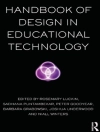Help students move from surface-level learning to the transfer of understanding.
How do social studies teachers maximize instruction to ensure students are prepared for an informed civic life? VISIBLE LEARNING® for Social Studies, Grades K-12 shows how the field is more than simply memorizing dates and facts—it encapsulates the skillful ability to conduct investigations, analyze sources, place events in historical context, and synthesize divergent points of view.
The Visible Learning framework demonstrates that learning is not an event, but rather a process in which students move from surface-level learning to deep learning, and then onto the transfer of concepts, skills, and strategies. Encouraging learners to explore different facets of society, history, geography, and more, best practices for applying visible learning to social studies curriculum are presented through:
· A scaffolded approach, including surface-level learning, deep learning, and transfer of learning
· Examples of strategies, lessons, and activities best suited for each level of learning
· Planning tools, rubrics, and templates to guide instruction
Teachers must understand the impact they have on students and select approaches to maximize that impact. This book will guide you through the process of identifying the right strategy for the right time to successfully move students through surface, deep, and transfer learning.
قائمة المحتويات
List of Figures
List of Videos
About the Authors
Acknowledgments
Chapter 1. Laying the Groundwork for VISIBLE LEARNING® for Social Studies
The Evidence Base
Noticing What Works
Learning From What Works
General Learning Practices
Conclusion
Chapter 2. Surface Learning in Social Studies
Why Surface Learning Is Essential
Surface Acquisition and Consolidation
Acquisition of Social Studies Learning Made Visible
Consolidation of Social Studies Learning Made Visible
Conclusion
Chapter 3. Deep Learning in Social Studies
Moving From Surface to Deep
Deep Acquisition and Deep Consolidation
Deep Acquisition of Social Studies Learning Made Visible
Deep Consolidation of Social Studies Learning Made Visible
Conclusion
Chapter 4. Teaching for Transfer in Social Studies
Moving From Deep Learning to Transfer
Types of Transfer: Near and Far
The Paths of Transfer: Low-Road Hugging and High-Road Bridging
Setting the Conditions for Transfer of Learning
Teaching Students to Organize Conceptual Knowledge
Teaching Students to Transform Conceptual Knowledge
Conclusion
Chapter 5. Determining Impact, Responding, and Knowing What Does Not Work
Determining Impact
Responding When There Is Insufficient Impact
Learning From What Doesn’t Work
Conclusion
References
Index
عن المؤلف
Nancy Frey is a Professor in Educational Leadership at San Diego State and a teacher leader at Health Sciences High and Middle College. She is a credentialed special educator, reading specialist, and administrator in California. She is a member of the International Literacy Association’s Literacy Research Panel. Her published titles include The Illustrated Guide to Visible Learning, Welcome to Teaching Multilingual Learners, Teaching Foundational Skills to Adolescent Readers, and RIGOR Unveiled: A Video-Enhanced Flipbook to Promote Teacher Expertise in Relationship Building, Instruction, Goals, Organization, and Relevance.












